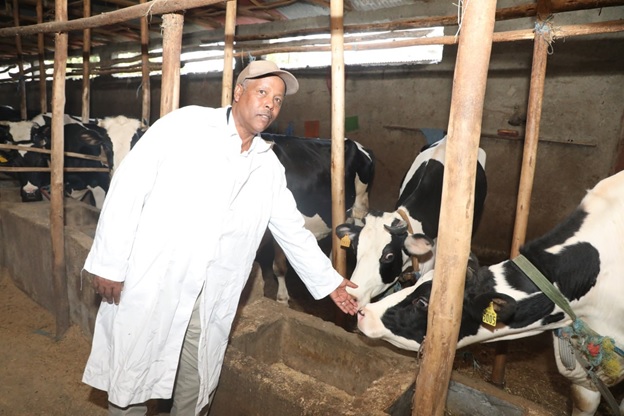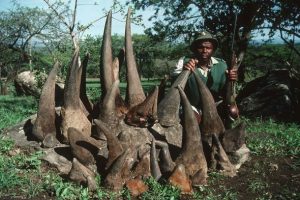
Cow’s milk is a vital component of school food programs and is regularly consumed by many children worldwide. It is advised for kids as a high-quality source of calories, protein and other micronutrients, including calcium.
For similar reasons, including the need for a rich source of calcium to support fetal skeletal development, pregnant women are also advised to increase their milk intake. Although calcium is commonly emphasized as a crucial ingredient in milk, a variety of additional milk constituents support the growth of fetuses, infants, and children.
Although milk is primarily a source of calories and protein, it also contains a variety of bioactive compounds that are not present in other foods. For instance, milk contains immunoglobulins that protect against infection and growth hormones like insulin-like growth factor I (IGF-I).
As stated by the FAO (Food and Agriculture Organization of the United Nations), around 150 million households produce milk worldwide. Most developing countries produce milk in small facilities, and it plays an important role in household livelihoods, food security, and nutrition. Hence, dairy development brings numerous benefits to farmers, milk collectors, and dairy processors. Milk production in industrialized regions such as the European Union (EU), the United States of America (US), New Zealand, and Australia exceeds local demand, resulting in exports to countries that do not produce enough. Depending on the country, the dairy sector includes a wide range of production modes, animal species, breeds, and links to production zones, actors, public policies, and human diets.
According to the FAO “Dairy Market Review: Emerging Trends and Outlook 2022” publication in 2022, milk output in Africa is expected to be nearly 51 million tonnes in 2022, a 0.5% decrease, driven primarily by anticipated declines, particularly in Kenya, Ethiopia, and South Africa, due to extreme weather events, the effects of conflicts on production systems, and rising input costs, offset by moderate gains in several countries.
Taking these and other relevant facts into account, Ethiopia’s government has been developing a variety of food security projects. Notably, “Yelemat Tirufat” is one of the development efforts focusing on nutritional opulence, which was started in 2022. The primary goal of the initiative is to speed up efforts to attain food self-sufficiency at the family and national levels in Ethiopia.
In line with the Yelemat Tirufat program, urban agriculture is also given a focus. Urban agriculture refers to the practice of cultivating, processing, and distributing food in or around metropolitan areas. It encompasses a variety of activities, including gardening, farming, aquaculture, and livestock rising, all of which are conducted within city limits or in nearby suburban areas. Similarly, urban agriculture is also prioritized as part of the Yelemat Tirufat program.
The Yelemat Tirufat, which intertwines with urban agriculture, began with milk, eggs, chicken meat, and honey, and will expand to additional items after the results are evaluated. More specifically, the program aimed to increase milk production from 6.9 billion liters to 11.7 billion liters. This result not only surpassed the Yelemat Tirufat initiative plan but also exceeded expectations. However, it is still not possible to fully cover the milk supply at the urban or national level.
Accordingly, The Ethiopian Herald conducted interviews with an individual in the field regarding the following questions: What should be done to produce more milk? How important is urban agriculture and the Lemat Tirufat to ensure access to milk and maintain its quality? These questions need answers.
Moges Jemberu, a man who engages in urban agriculture, started his breeding by buying a single cow when he left his government job 13 years ago, and he now has over 40 cows. His work has created temporary and permanent jobs for 13 people, and he is known for providing quality milk to over 400 children in his village.
In addition to government-supported experts, he hired two veterinary surgeons to ensure milk quality and cow health. He also mentioned that he carefully stores and prepares fodder. These are extremely important activities for the quality and safety of milk. Besides, it is expected of individuals who purchase milk from him and sell it in the market to do so in appropriate and standardized cans or materials. The milk of cows that are vaccinated and given medications to preserve their health and milk quality won’t be offered for sale. “These are crucial steps to guarantee the quality of milk,” he said.
He said that although the Yelemat Tirufat and urban agricultural schemes have many promising potential, it is important to address challenges in the sector, including the issue of land provision, the fodder production process, and others. Furthermore, if cow breeders’ motivation, dedication, and performance are regularly examined, various incentives and additional land are supplied, the country’s milk quantity and quality increase, while also attracting new people to the sector.
Yelemat Tirufat and urban agriculture are critical not only for producing milk and meat, but also for conserving and caring for the environment. For example, the cattle herd is currently creating natural fertilizer, which is necessary for urban agriculture, environmental protection, and generating revenue by selling the natural fertilizer to the market, he explained.
More importantly, the government should establish a dairy village to achieve Yelemat Tirufat and urban agriculture goals. Because the village will help to provide not only quality, safe milk and dairy products, but also allow milk to be collected in one spot and distributed to the community at a reasonable price, as well as exporting to the international market by adding value. He also mentioned that urban agriculture can be practiced using natural fertilizer obtained from cow breeding.
Furthermore, the village’s formation will enable the government and key agencies to collaborate in an organized and coordinated manner to offer qualified professionals, fodder, and medication, as well as large-scale natural fertilizer preparation, Moges noted.
Indeed, implementing urban agriculture and Yelemat Tirufat has a variety of benefits, including food security. They are intertwined and help to increase food access and security by supplying fresh items to urban communities. It also encourages environmental measures such as composting, rainwater harvesting, and lower transportation emissions due to its proximity to customers. They help to green urban spaces, improve air quality, and increase biodiversity. Therefore, the government should focus on establishing dairy breeding communities in order to realize the goal of urban agriculture and Yelemat Tirufat.
BY EPHREM ANDARGACHEW
THE ETHIOPIAN HERALD SUNDAY EDITION 15 JUNE 2025




